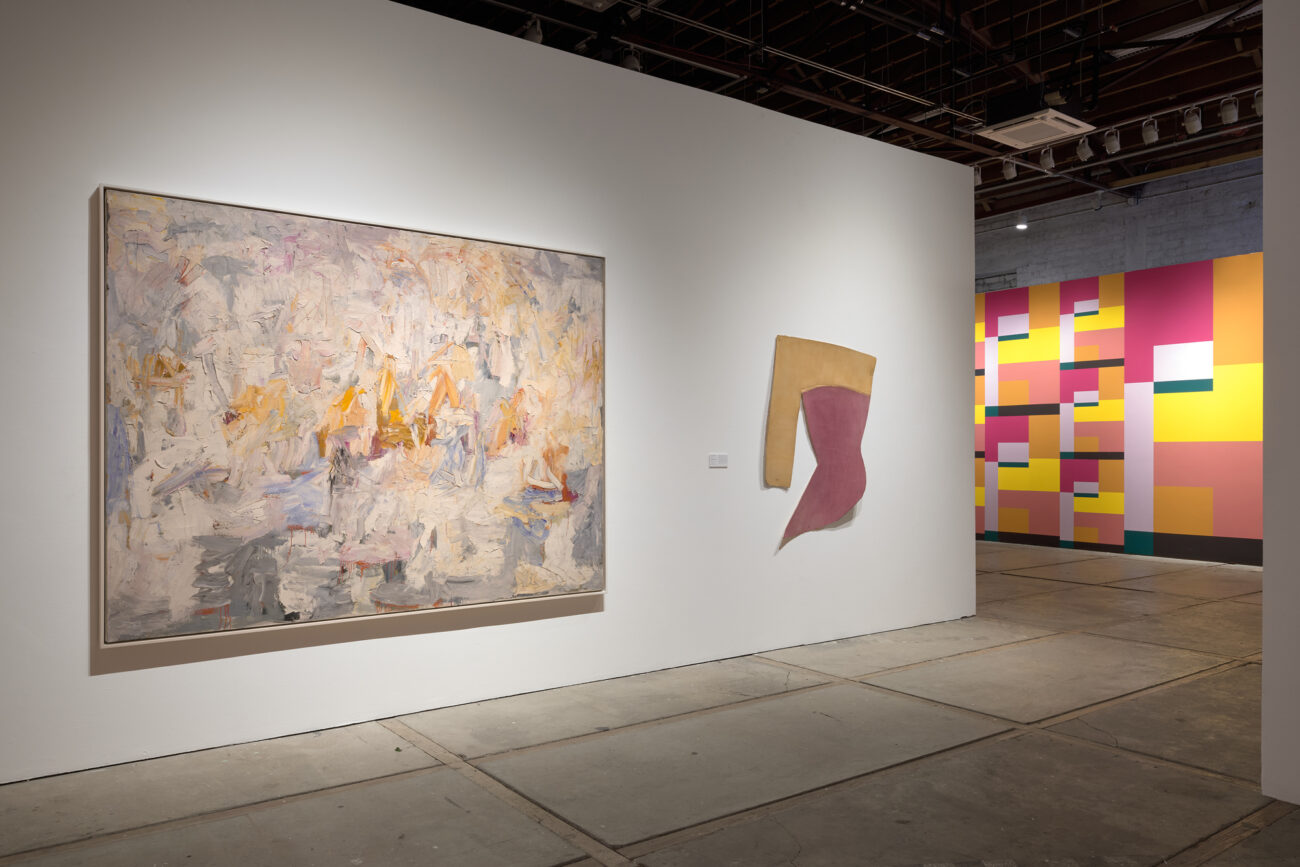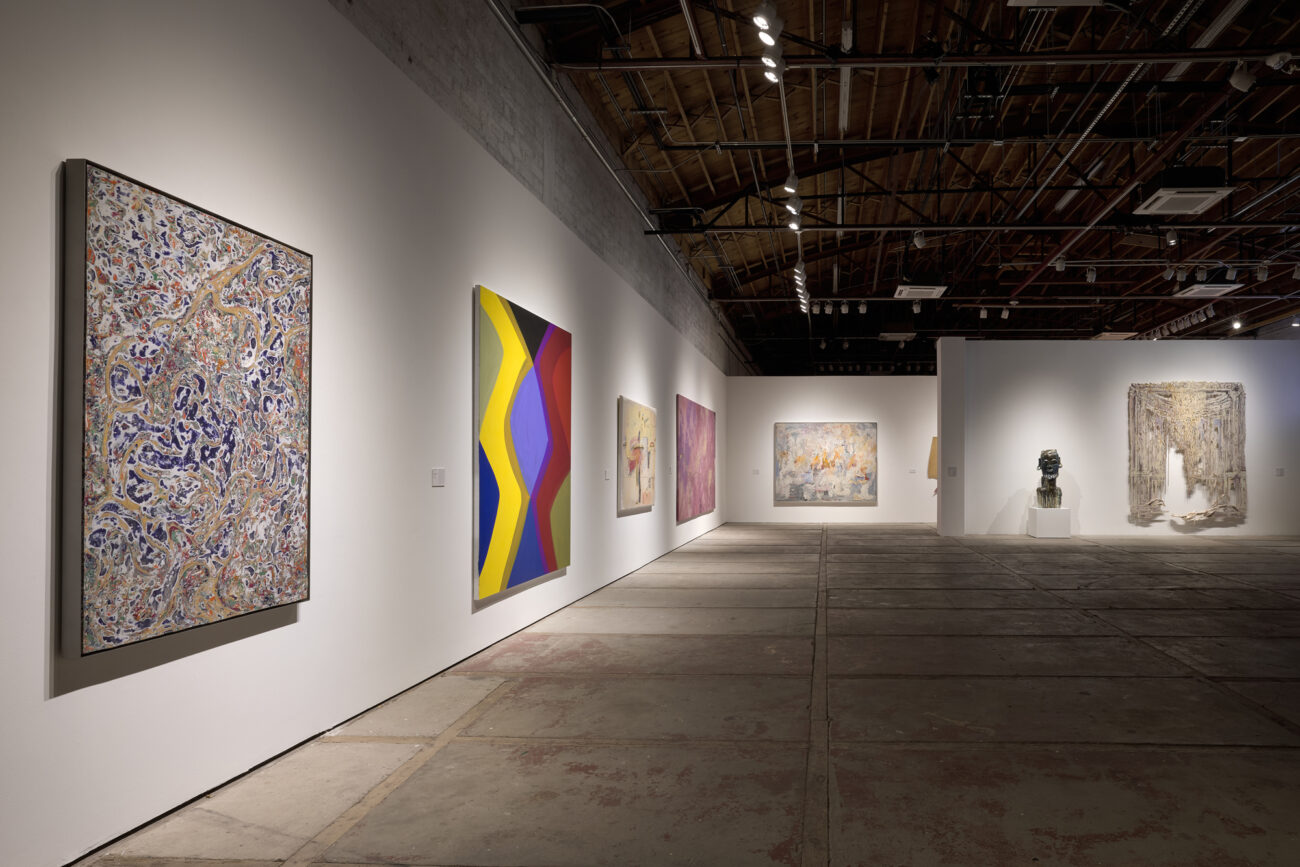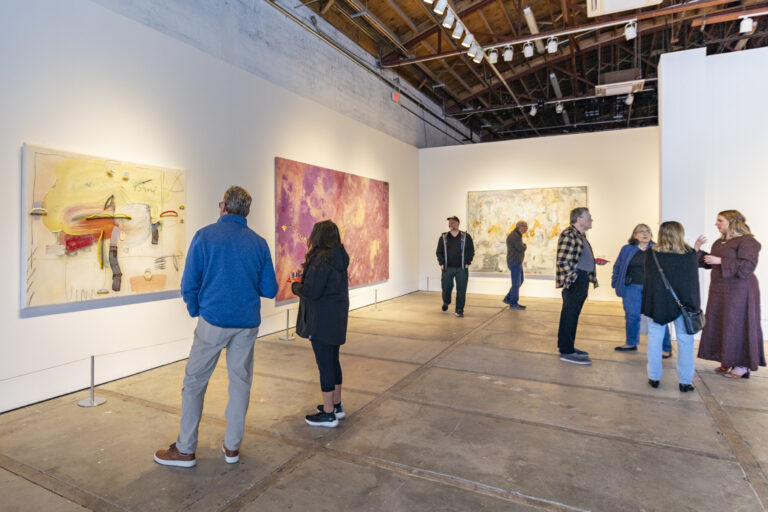

Tia Collection is delighted to announce The Space Between Two Movements, an exhibition that celebrates the transformative journey from the cold stillness of winter to the vibrant warmth of spring. This gathering of nine renowned artists embodies diverse perspectives, yet they converge in their shared celebration of movement, color, and abstraction. The forms and texture of sculptural work by Diana Al-Hadid and Leilah Babirye evoke snow and ice melting into water, a poetic nod to the thawing of winter. Marina Adams’ vibrant palette bridges the seasons: spring’s purples and yellows meet the rich blues and reds of winter in a luminous center of periwinkle. James Pinkney Havard’s abstract shapes capture the reawakening of life—mimicking the forms of flowers, insects, worms and birds—as the frost retreats and sunlight returns. Esteban Cabeza de Baca incorporates cochineal in a striking celebration of human connection with organic material and the earth’s breath as it awakens from winter’s slumber. Lynn Umlauf captures the blossoming vitality of spring in an organically shaped painting with a warm palette reminiscent of radiant sunsets and blooming life. The abstract and textural work of Shirley Goldfarb and Lee Bul balance cool and warm tones, evoking snow melting into blossoms and the interplay of winter’s remnants with spring’s arrival. Judit Reigl could be interpreted to portray a river’s gradual thaw, an emblem of life reawakening as winter releases its grip. The exhibition, curated by Brooke Denton and Sarah Greenwood, invites viewers to reflect on the rhythms of nature and the interconnectedness of life and art, offering a powerful celebration of regrowth, movement, and the enduring beauty of change.

Marina Adams (b. 1960) is an American abstract painter known for her vibrant, rhythmic compositions that explore color, form, and movement. Influenced by modernist traditions and Islamic, Byzantine, and Matissean aesthetics, her work emphasizes bold structures and dynamic relationships. Adams’ practice bridges painting, architecture, and textile-like patterning, creating visually compelling, energetic abstractions.
Diana Al-Hadid (b. 1981) is a Syrian-American artist known for her intricate sculptures, wall panels, and installations that blend architectural, historical, and mythological references. Her work explores materiality, fragmentation, and decay, drawing from influences like Renaissance art, Islamic architecture, and science. Al-Hadid’s hauntingly ethereal structures challenge perceptions of space, time, and permanence.
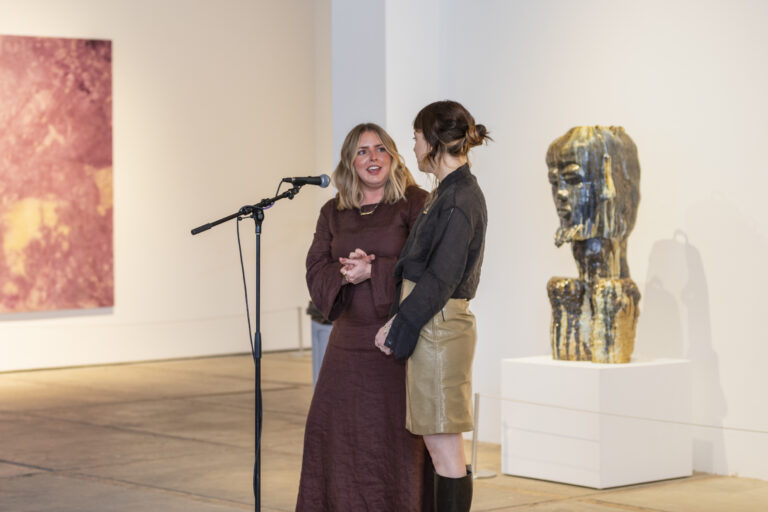
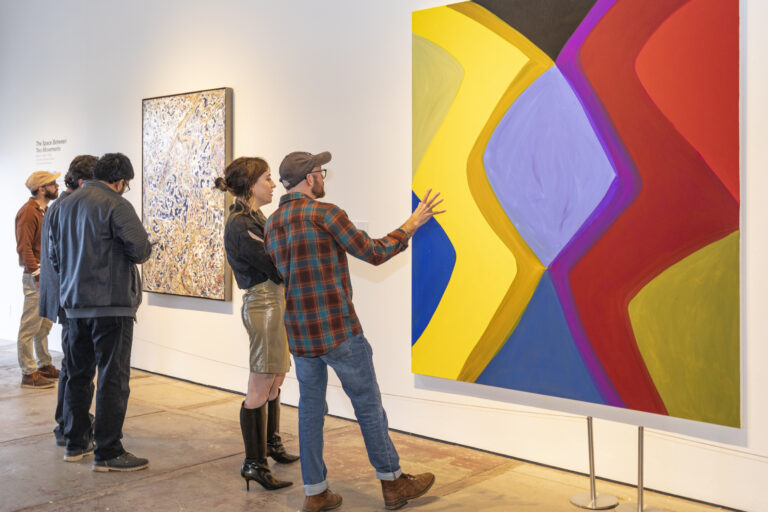
Leilah Babirye (b. 1985) is a Ugandan-born, New York-based artist known for her powerful sculptures, ceramics, and paintings that explore identity, queerness, and resistance. Working with found materials, she transforms wood and metal into expressive figures, drawing from traditional African art and LGBTQ+ activism to challenge societal norms and celebrate marginalized communities.
Lee Bul (b. 1964) is a South Korean artist known for her futuristic, dystopian sculptures and installations that explore technology, identity, and utopian dreams. Influenced by cyberpunk, biomorphism, and architectural theory, her work critiques authoritarianism and the human body’s evolution, blending organic and mechanical forms in visually striking, conceptually rich compositions.
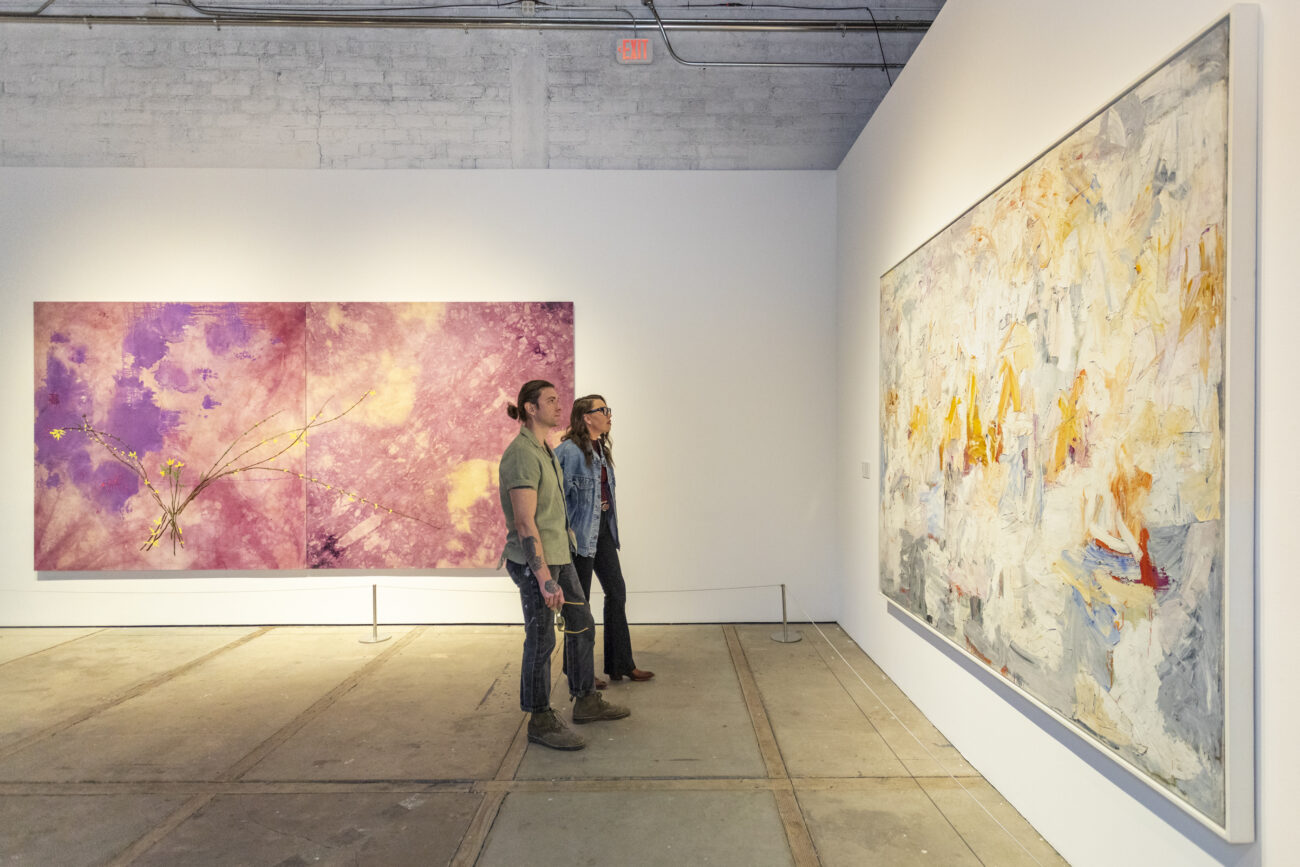
Esteban Cabeza de Baca (b. 1985) is an A:shiwi (Zuni), Indé (Apache) and Mexican artist whose paintings and sculptures challenge colonial histories and explore Indigenous, Mexican, and American identities. Blending surrealism, landscape, and abstraction, his work reimagines history through fluid brushwork and layered narratives, addressing themes of migration, memory, and environmental change with a decolonial perspective.
Shirley Goldfarb (1925 – 1980) was an American painter known for her luminous, atmospheric color field paintings and her life in Paris’s bohemian art scene. Influenced by Abstract Expressionism and European modernism, her work captured mood and emotion through subtle tonal shifts. Goldfarb also documented artistic life through vivid diaries and photography.
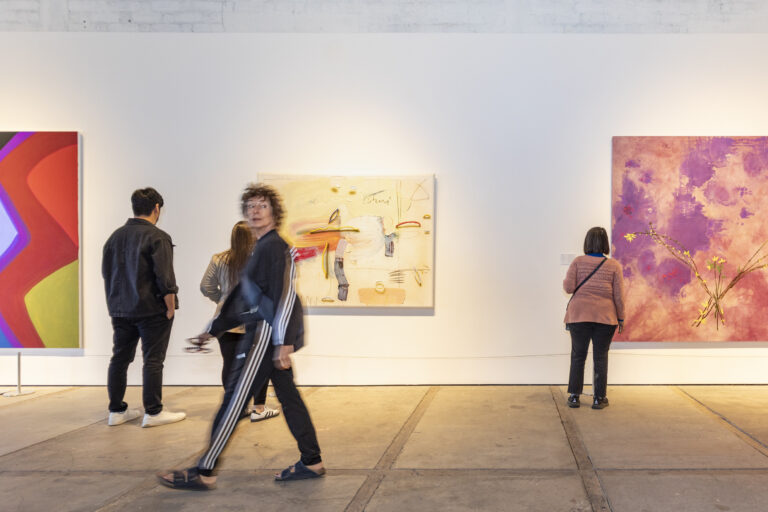
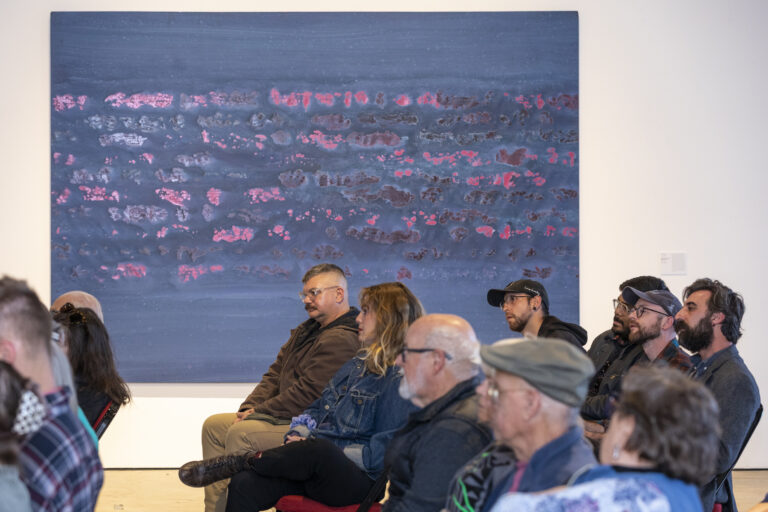
James Pinkney Havard (1937 – 2020) was an American painter known for pioneering abstract illusionism, blending trompe-l’œil techniques with gestural abstraction. Influenced by Native American petroglyphs and outsider art, his work combined raw textures, layered imagery, and symbolic forms. Havard’s distinctive style bridged modernist abstraction and narrative expression, leaving a lasting impact.
Judit Reigl (1923 – 2020) was a Hungarian-French painter known for her dynamic, gestural abstractions that bridged Surrealism, Abstract Expressionism, and lyrical abstraction. A refugee from communist Hungary, she developed a raw, physical painting style, exploring movement, materiality, and the human form. Reigl’s work remains influential in postwar European abstraction.
Lynn Umlauf (1942 – 2022) was an American artist known for her abstract paintings, sculptures, and mixed-media works that explore color, form, and spatial relationships. Influenced by modernist traditions and architectural structures, her work integrates bold hues with subtle textures, creating dynamic compositions that blur the boundaries between painting and three-dimensional space.
